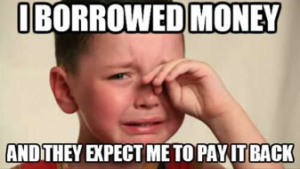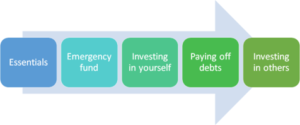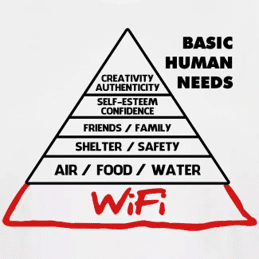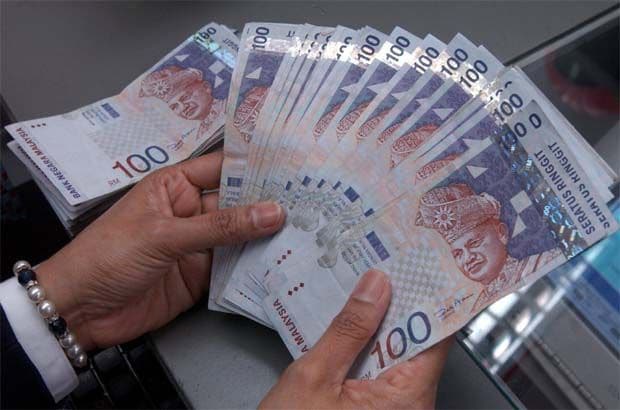Table of Contents
Many countries in the world are now aiding employers, employees and the unemployed by providing ‘free money’ to prevent a major recession. Due to the current nature of the pandemic, some people are spending less for a multitude of reasons. This could possibly be due to job loss, pay cuts or simply not having much to spend on. Long were the days where we got a coffee to catch up with friends over the weekend, and since I’m not spending on coffee…. I’m not spending much at all!
We all know that nothing in life is indeed free, so why are governments doing this? This article will explain your longing questions of how the government suddenly comes up with money to provide their citizens and why you shouldn’t buy those AirPods just yet.
Where does this money come from?
If the option of printing unlimited free money was available, the value of money drops resulting in inflation. So how does the government suddenly have extra cash to spare to give it to a number of qualified citizens?
Much to your surprise, governments go into debt, borrowing this large sum of money to lend it to their citizens. Wait, I didn’t know I had to pay it back?!

Simply put, governments invest in their citizens with hopes that it will get returns from you in the future through higher taxes. This means that the taxes we pay in the future will be paying back the loan that the government took to obtain this money PLUS the interest on it.
Smart? It gets better.
Opportunists will invest this money into their businesses and as their business grows, more staff are hired. This then drops the country’s unemployment rate in addition to subjecting more people to taxes.
Win-win.
How to spend this money productively
Wealthy people know how to spend money to make them even more money. The RM800 you got from the government (lucky you!) can go a long way and might even make you more. This is our step-by-step guide to figure out what to do with your not-so-free money:

Step 1: Essentials

This was taken directly from Maslow himself. No editing, for real. WiFi is actually the cornerstone of our lives.
We’re not going to bore you with the details of Maslow’s Hierarchy of Needs, but think of basic necessities. However, what some people define as basic needs might not cross the mind of another. It’s simple, spend on what’s absolutely necessary to you. Food, shelter and safety to name a few.
An example of this is what’s the point of air, food, and water if you don’t have WiFi? Hol’ up.. I’m starting to think someone tampered with this.
On a more serious note, you need to prioritize necessities in order of importance. This isn’t to tell you that all your money should go on expensive food though! Essentials first, then we move on to the next step.
Step 2: Emergency fund

Yes, building your emergency fund is considered as spending your money.
So you have some left over money from your essential spendings. The next best thing to do is to put it in an emergency fund. Save it for a rainy day. We have previously discussed why it’s important to have emergency funds but it’s even more so important now as things are changing rapidly.
There’s no point putting your money into investments this month if you’re gonna have to withdraw it (at a possible loss) next month to pay for your essentials. Consider this as a back up to your essential spendings. As we’ve mentioned before, aim for 3-6 months of your monthly costs as a rainy day fund and you’ll be set!
This emergency fund can be kept in your usual bank, high-interest saving accounts, or even Amanah Saham. Look for products with high liquidity that will give you access to your funds immediately.
Step 3: Investing in yourself

Self love? (Image taken from The Guardian)
Got leftover from the two steps above? Good for you! Now, what do you do? The term self love has been mentioned frequently in the tabloids and this works on many different levels.
It works in many different ways. If you’ve been grinding for the past year to build up your rainy day fund and you’ve finally achieved it, splurging some extra money on a new pair of shoes won’t hurt! Yes, investments may pay off better in the long run financial wise but treating yourself every once in a while gives you something priceless – happiness and better mental health.
It’s always about the journey, not the end. Don’t forget to smell the roses along the way. There’s also tons of other ways you can invest in yourself that can both provide you joy and prove beneficial financially.
Been wanting to learn how to make that burnt cheesecake? Take up an online baking class or buy baking tools. Who knows, you might be so good at it you can start selling your baked goods earning you more money! Taking up a skill can be very useful as it means you no longer have to depend on others to provide you with what you want and you can even make a profit from your skill.
Step 4: Paying off debts
If you have any outstanding high-interest debts like credit card loans for example, this may be a good time to pay it off. This is because when you pay for it now, you’ll pay it off much faster because you’re paying down the principle of the loan itself and not just the interest.
Just like our investments, debts also follow the eighth wonder of the world – compounding. Delaying payment of your debts means they have time to grow. “He who understands it, earns it; he who doesn’t, pays it.”

Think of your financials as a garden you’re trying to build. Debt, especially high interest ones, are like parasites chewing away at your produce. Don’t give them the chance to grow and start a colony! End them. Nicely.
It’s best to do this before investing in the markets as you’ll probably gain a better return on this and it gives you great peace of mind knowing that you’ve reduced your obligations. Your monthly costs go down, and the rainy day fund you built to last you 6 months could last you 9 now!
Step 5: Investing
Finally. If you’ve gone through all of those, it’s time to start investing.
Stashing your money in your savings account won’t do you any good due to inflation. In fact, you’re most likely devaluing your hard earned savings! So, investing it elsewhere is a good idea to lay the foundation for your retirement. Investing means putting your money into entities that you believe will spend your money more productively than you can, therefore generating returns on your invested funds.
If you don’t know exactly where to invest, we have a few articles going through the different products and you can check out which one suits you best!
- What Is ASB Financing & How You Can Use It To Build An RM 1,000,000+ Retirement Portfolio
- How I Plan To Build My 5 Figure Portfolio Using Etoro
- StashAway Vs Wahed Vs MyTheo – Honest Review Of Roboadvisors
Conclusion
We hope we’ve managed to paint a better picture of why the money you’ve received isn’t exactly free and the many ways you should spend that money. If you do however reach step 5 and still have leftovers then go on, treat yourself to those AirPods you’ve been eyeing. Life is about balance, at the end of the day there is no point in having a 7-figure saving account when you don’t spend money on what you love (J.Paul Getty is that you?)
If you enjoyed this article, spread the love and give it a share! We’d really appreciate it 🙂
Other reads:

